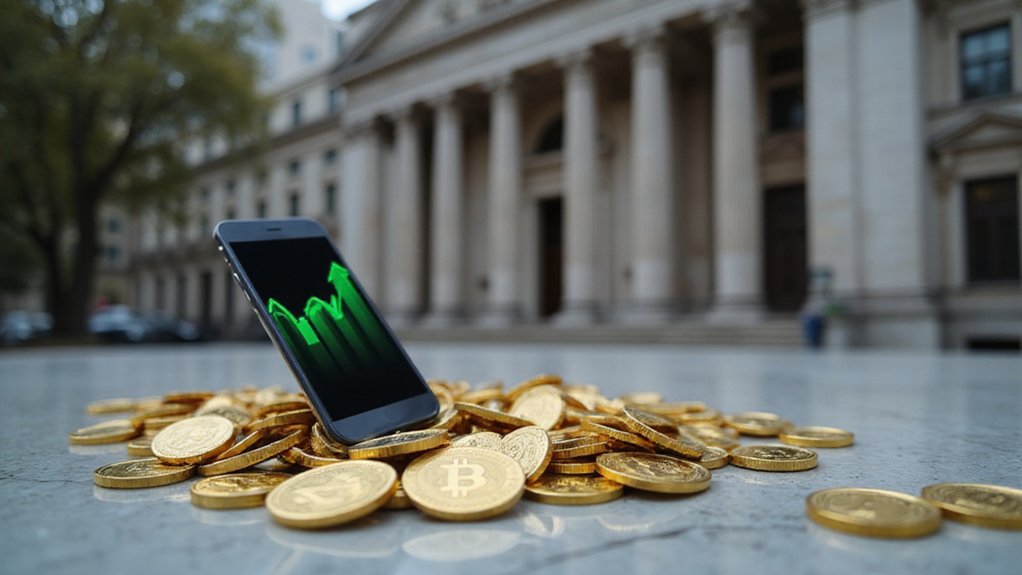While the GENIUS Act of 2025 ostensibly closed the door on stablecoin issuers directly paying yields to token holders, it appears Congress left a window conspicuously ajar—one large enough for $280 billion worth of digital assets to slip through with their yield-generating schemes intact.
The loophole operates with elegant simplicity: while stablecoin issuers cannot directly offer yields, nothing prevents their affiliated firms or partnered exchanges from doing so. Coinbase and Kraken have enthusiastically embraced this arrangement, transforming themselves into yield intermediaries that make traditional bank savings accounts appear quaint by comparison. The regulatory ambiguity creates enforcement challenges that would make a tax attorney blush.
Traditional banking groups, led by the Bank Policy Institute and American Bankers Association, have sounded alarm bells with the urgency of fire wardens. Their petition to Congress carries an ominous Treasury projection: potential deposit outflows reaching $6.6 trillion as customers migrate toward yield-bearing stablecoins. Such figures would fundamentally destabilize the deposit-dependent lending model that underpins American banking.
The competitive dynamics appear particularly concerning when considering that 83.3% of yield-bearing stablecoins exceed U.S. Treasury rates—returns that often rely on complex financial engineering involving derivatives and DeFi protocols. This creates the dual mandate problem: maintaining stability while generating attractive yields, a tension that increases systemic risk exponentially. The market concentration becomes evident when examining that just five stablecoins control over 93% of the entire market capitalization.
Market projections suggest the stablecoin ecosystem could expand to $2 trillion by 2028, amplifying these concerns beyond niche crypto circles into mainstream financial infrastructure. The growth trajectory, fueled partly by enticing yield offerings, threatens to accelerate deposit migration from traditional institutions. With transaction fees significantly lower than traditional payment methods, stablecoins present an increasingly attractive alternative for both institutional and retail participants.
The implications extend beyond simple market competition. Banks facing significant deposit outflows would encounter funding constraints that impair their ability to extend credit, potentially pushing interest rates higher while decreasing lending availability to businesses and families.
The yield loophole therefore presents not merely a regulatory oversight but a fundamental challenge to the traditional banking model‘s viability.
Whether Congress will act decisively to close this regulatory gap—or whether traditional banks must adapt to this new competitive reality—remains an open question with profound implications for American financial architecture.








